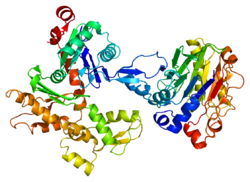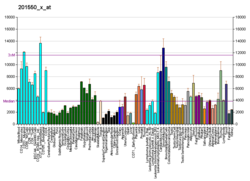Protein-coding gene in the species Homo sapiens
Actin, cytoplasmic 2, or gamma-actin is a protein that in humans is encoded by the ACTG1 gene.[5] Gamma-actin is widely expressed in cellular cytoskeletons of many tissues; in adult striated muscle cells, gamma-actin is localized to Z-discs and costamere structures, which are responsible for force transduction and transmission in muscle cells. Mutations in ACTG1 have been associated with nonsyndromic hearing loss and Baraitser-Winter syndrome, as well as susceptibility of adolescent patients to vincristine toxicity.







